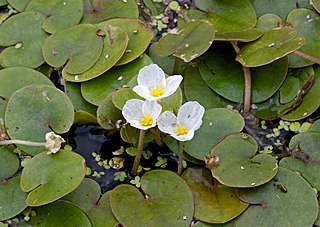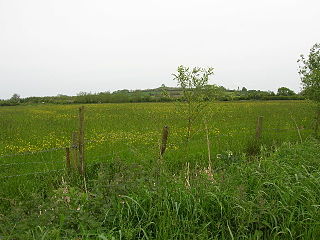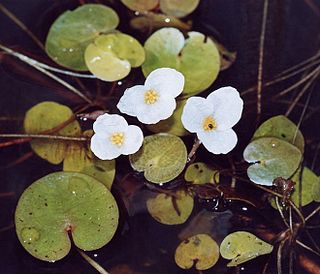
Convolvulaceae, commonly called the bindweeds or morning glories, is a family of about 60 genera and more than 1,650 species. These species are primarily herbaceous vines, but also include trees, shrubs and herbs. The tubers of several species are edible, the best known of which is the sweet potato.

The Integrated Taxonomic Information System (ITIS) is an American partnership of federal agencies designed to provide consistent and reliable information on the taxonomy of biological species. ITIS was originally formed in 1996 as an interagency group within the US federal government, involving several US federal agencies, and has now become an international body, with Canadian and Mexican government agencies participating. The database draws from a large community of taxonomic experts. Primary content staff are housed at the Smithsonian National Museum of Natural History and IT services are provided by a US Geological Survey facility in Denver. The primary focus of ITIS is North American species, but many biological groups exist worldwide and ITIS collaborates with other agencies to increase its global coverage.
This article gives an overview of the aquatic communities in the British National Vegetation Classification system.

Hydrocharis is a genus of aquatic plants in the family Hydrocharitaceae described as a genus by Carl Linnaeus in 1753. It is widespread across much of Europe and Asia, plus a few scattered locations in Africa. It is also reportedly naturalized in parts of North America.

Curry and Hay Moors is a 472.8 hectare biological Site of Special Scientific Interest in Somerset, notified in 1992.

West Moor is a 213.0 hectare biological Site of Special Scientific Interest on the River Parrett in Somerset, notified in 1985.

Hydrocharis morsus-ranae L. is a species of the genus Hydrocharis known by the common name European frog-bit. It is a free-floating flowering plant that bears small white flowers. "Morsus-ranae" means "frog bite" in Latin, and it is part of this species' scientific name because frogs might seen as biting on the leaves. European frog-bit is often mistaken for an American frog-bit due to their similar looks and floating freely. It usually displays invasive behavior in Canada and North America, having a major impact on native ecosystems. However, European frog-bit is efficient in accumulating high concentrations of heavy metals and chemicals, removing waste from water.
Cehei Pond Nature Reserve is situated in north-western Romania, in Crasna river floodplain, in Sălaj County and is a protected area with aquatic vegetation and fauna specific to such area.

Elmidae, commonly known as riffle beetles, is a family of beetles in the superfamily Byrrhoidea described by John Curtis in 1830. Both adults and larvae are usually aquatic, living under rocks in fast-flowing shallow areas of streams, such as riffles, feeding on algae and biofilms. There are more than 150 genera and 1,500 described species in Elmidae. The oldest record of the group is Cretohypsilara from the Cenomanian aged Burmese amber.

iNaturalist is an American 501(c)(3) nonprofit social network of naturalists, citizen scientists, and biologists built on the concept of mapping and sharing observations of biodiversity across the globe. iNaturalist may be accessed via its website or from its mobile applications. iNaturalist includes an automated species identification tool, and users further assist each other in identifying organisms from photographs. As of 24 February 2024, iNaturalist users had contributed approximately 172,751,520 observations of plants, animals, fungi, and other organisms worldwide, and around 350,000 users were active in the previous 30 days.
Haeterius blanchardi is a species of clown beetle in the family Histeridae. These beetles are native to the United States, and have been found in Wisconsin, Massachusetts, and New Jersey.

Haeterius is a genus of clown beetles in the family Histeridae. There are at least 20 described species in Haeterius.
Arthmius is a genus of ant-loving beetles in the family Staphylinidae. There are about nine described species in Arthmius.
Haeterius exiguus is a species of clown beetle in the family Histeridae. It is found in North America.
Haeterius tristriatus is a species of clown beetle in the family Histeridae. It is found in North America.
Arthmius morsus is a species of ant-loving beetle in the family Staphylinidae. It is found in North America.
Haeterius zelus is a species of clown beetle in the family Histeridae. It is found in North America.
Haeterius wagneri is a species of clown beetle in the family Histeridae. It is found in North America.
Haeterius californicus is a species of clown beetle in the family Histeridae. It is found in North America.








